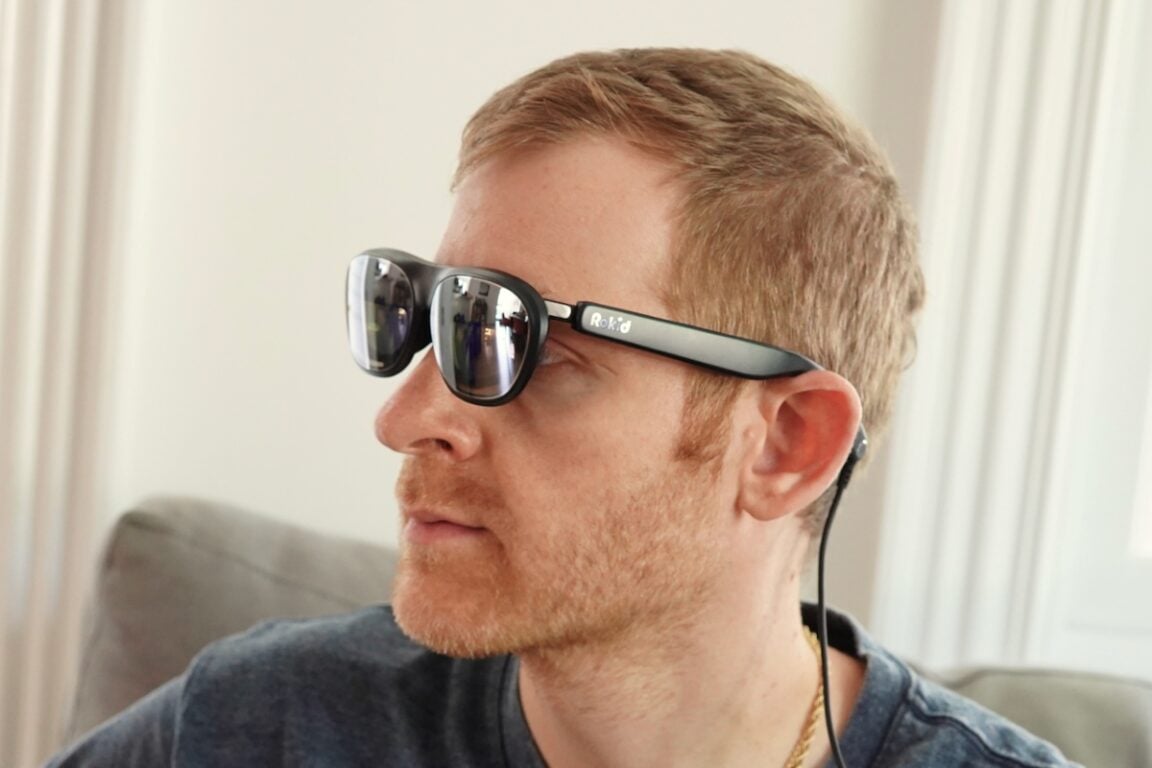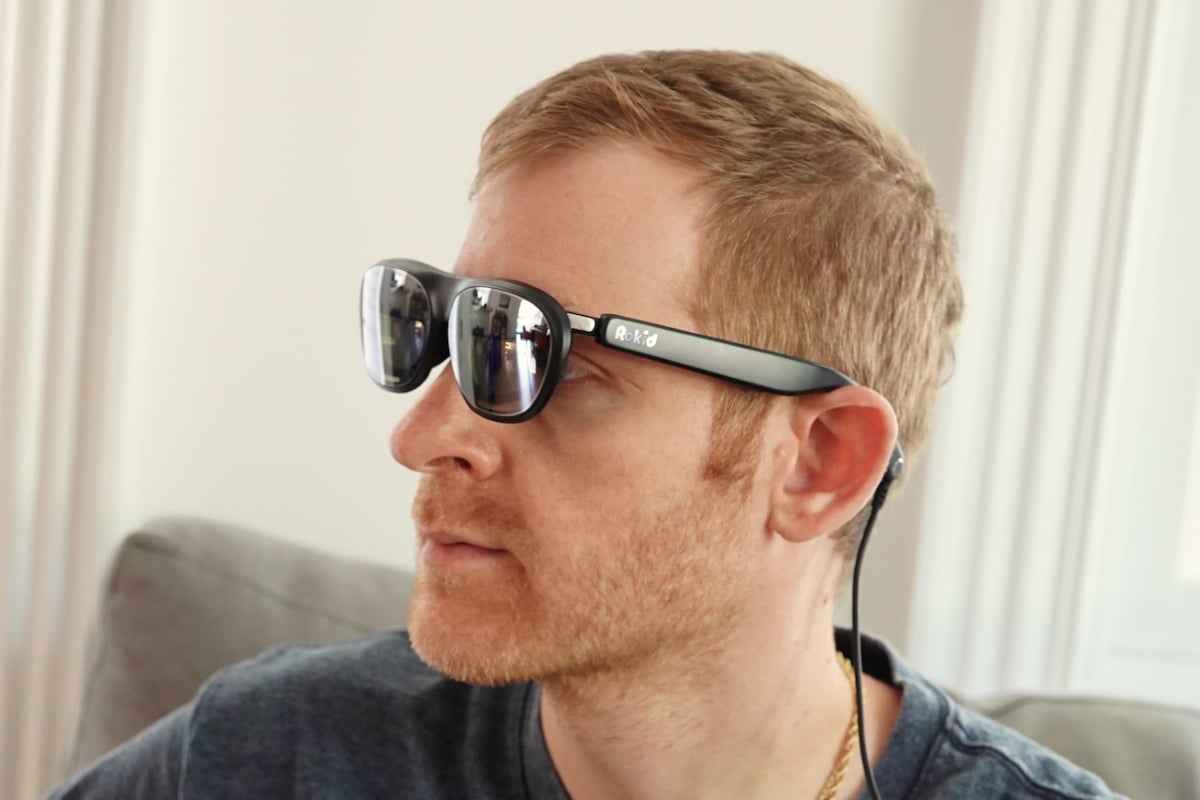
The Rokid Max 2 augmented reality glasses are part of a growing category of wearable displays designed to offer a private, portable screen you can use almost anywhere. With an OLED display that projects a 215-inch virtual screen, 1080p resolution (up to 1200p with supported devices), a 50° field of view, and up to 600 nits of brightness, the Rokid Max 2 delivers sharp visuals and impressive immersion in a package that weighs just 75 grams and looks like a pair of sunglasses.
Built-in diopter adjustment lets nearsighted users fine-tune each lens from 0.00D to -6.00D without needing prescription inserts. Whether you’re gaming, watching movies, or getting work done, they’re compatible with most USB-C devices including Android phones, iPhones, laptops, and gaming handhelds, with no adapter or app required.
Overview
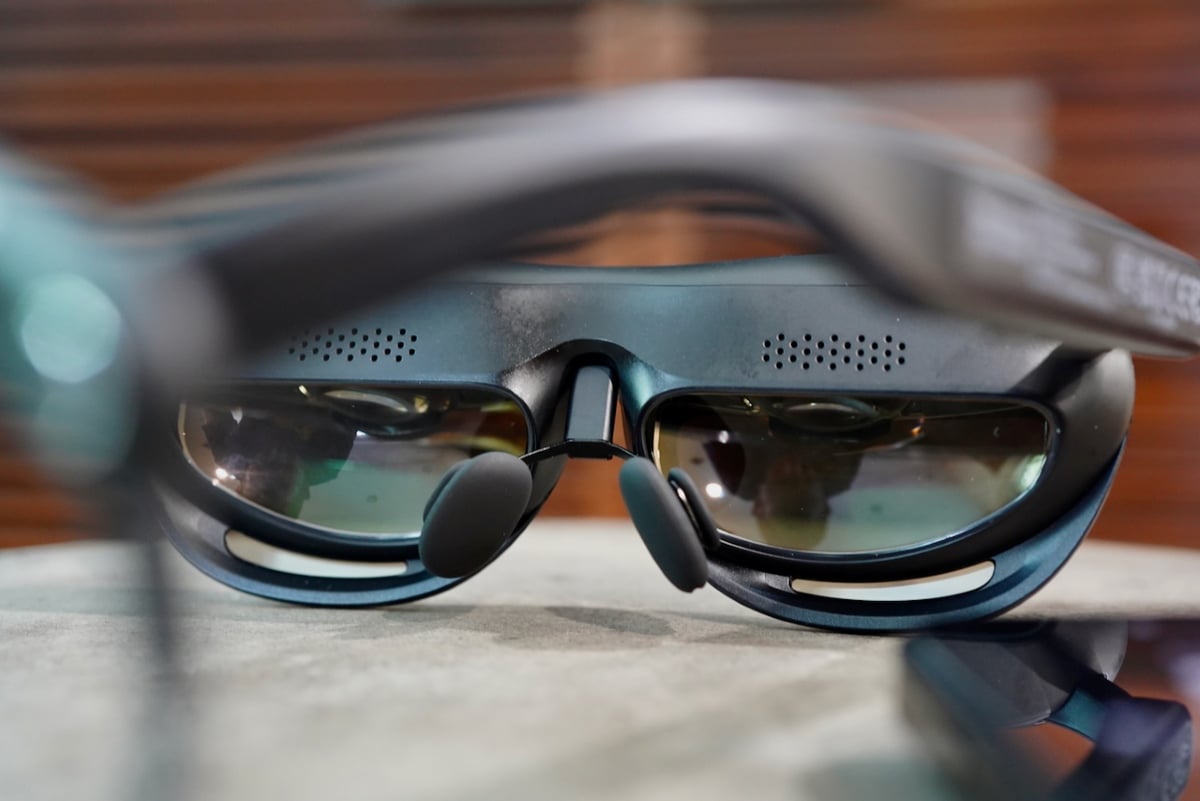
The Rokid Max 2 glasses make a strong first impression, especially if you haven’t used wearable displays before. They’re not VR goggles and won’t transport you into a fully immersive world, but they offer something more practical: a bright, personal screen that floats comfortably in front of your eyes. For casual streaming or light productivity on the go, it’s a surreal but intuitive experience.
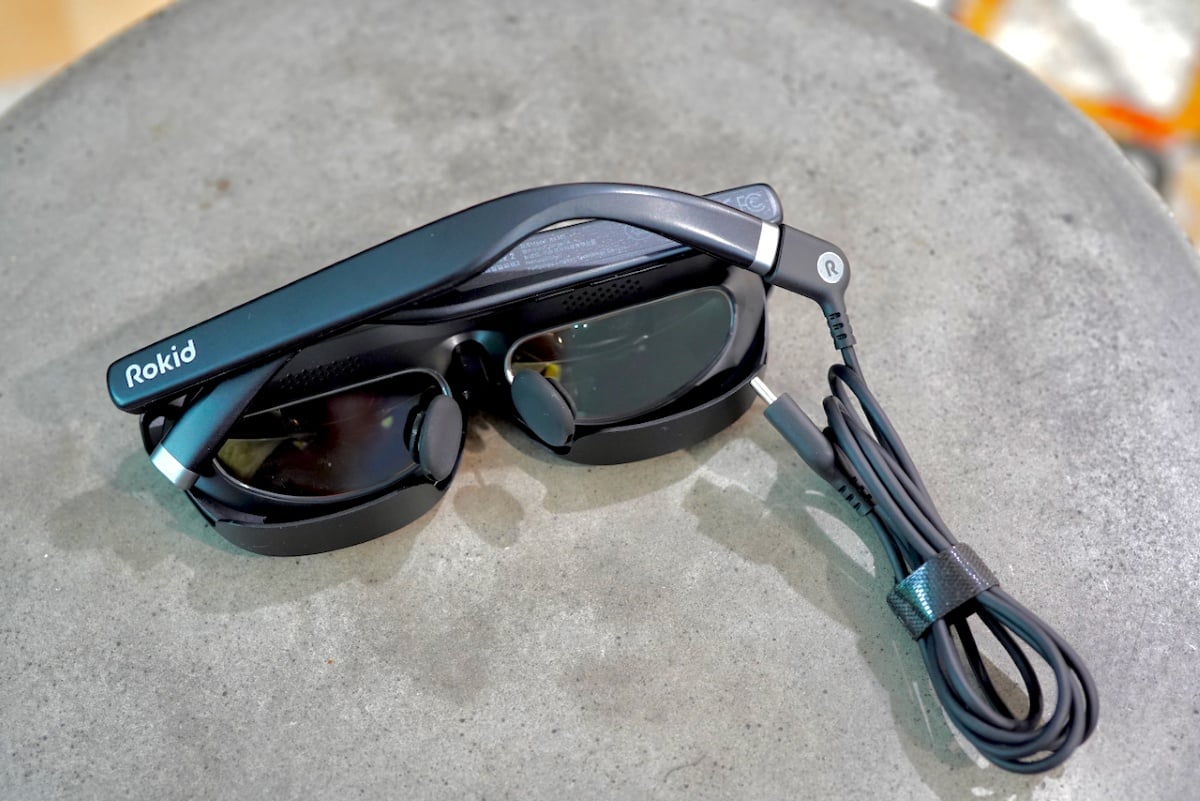
The glasses fold like a regular pair of sunglasses, weigh just 75 grams, and look surprisingly close to everyday eyewear. A USB-C cable runs from the back of the right arm to your device. Functionally, the glasses behave like an external monitor, typically mirroring your device’s screen. Just don’t expect full field-of-view immersion or deep interactivity. This is closer to a floating laptop monitor than a holodeck.
Display Quality & Visual Experience
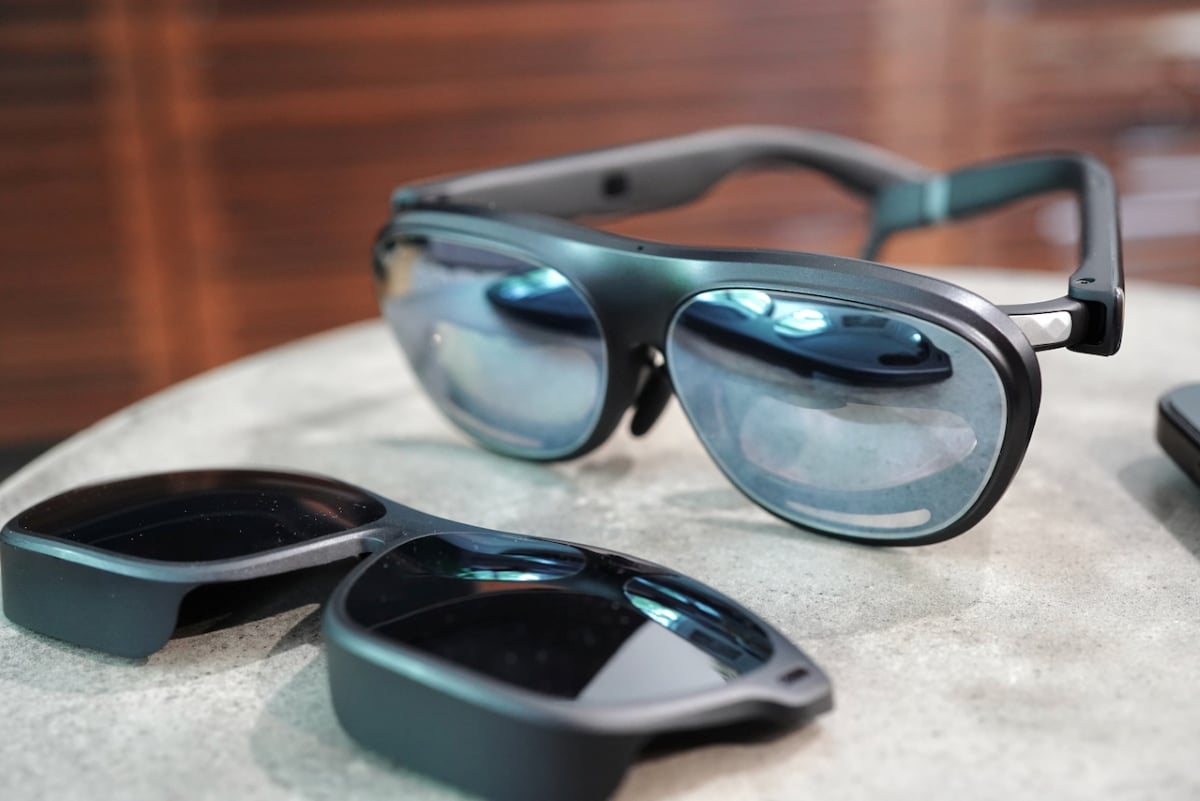
Rokid nails the basics. The image is crisp and bright, and looks equivalent to a 15-inch laptop screen hovering one to two feet in front of you. Unlike the usual marketing claims of a 200-inch theater-sized experience, your eyes focus on it as if it’s right in front of you—which is actually more comfortable and usable.
The OLED display delivers full 1080p resolution and supports up to 1200p with the Rokid Station 2, along with a 120Hz refresh rate and up to 3000 nits of brightness. Visual quality holds up especially well in darker environments or when using the blackout shades. For movies, streaming, or even just watching YouTube, it looks and feels as sharp and vibrant as a regular display or TV.
Usability & Device Compatibility
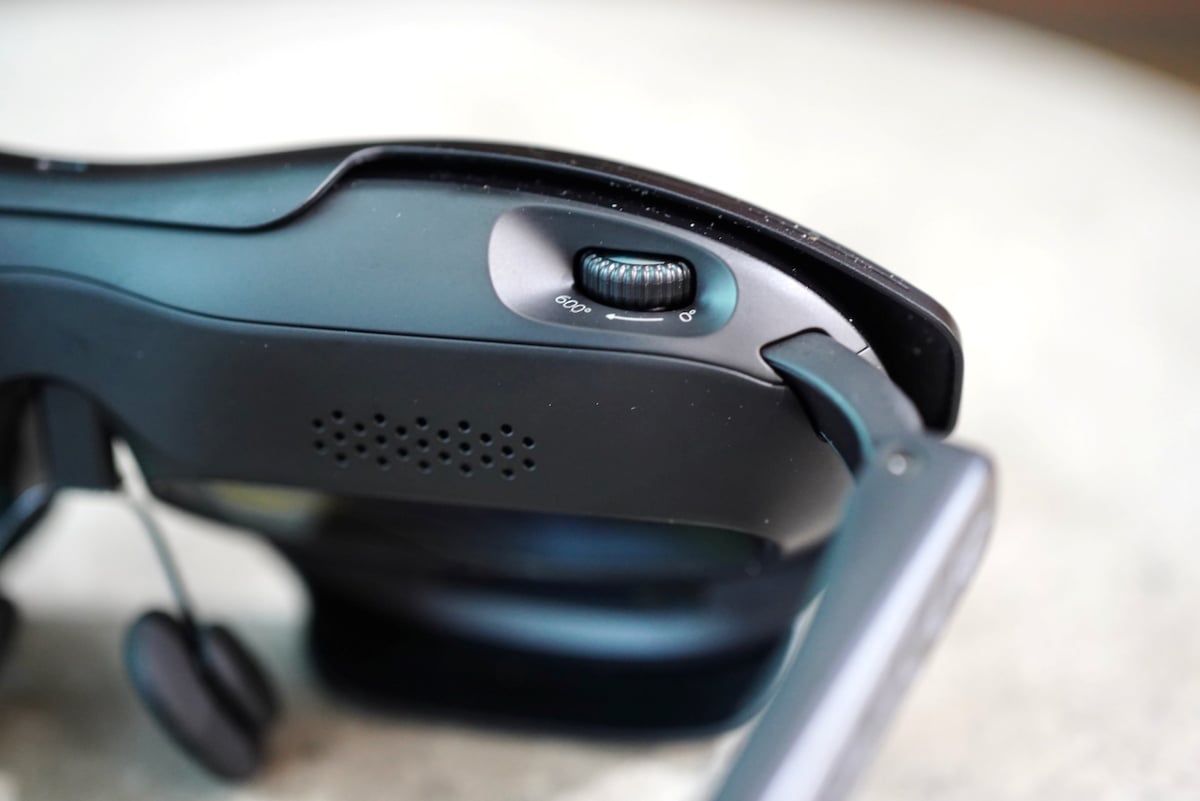
One of the best parts of using the Rokid Max 2 is how simple it is. There’s no app to install, no account to create, no pairing, and no charging. You just plug it in and it works, including with iPhones. There’s no battery, it’s powered by whatever it’s plugged into. Volume and brightness can be adjusted using buttons on the underside of the right stem, and each lens can be fine-tuned using the built-in prescription adjustment wheels, which support a range from 0.00D to -6.00D for nearsighted users. It’s all quick and intuitive.
Most devices will mirror directly to the glasses, and most video apps like YouTube and Disney Plus will extend full screen and full resolution video to the glasses. Videos will continue to play even if the phone is locked. It’s really nice watching videos from your phone but you’ll learn quickly how challenging it is to use touch controls or the keyboard without being able to see your fingers.
Rokid Max 2 will even work with gaming consoles like PS4 or Xbox with an HDMI-to-USB-C adapter.
Limitations & Comfort
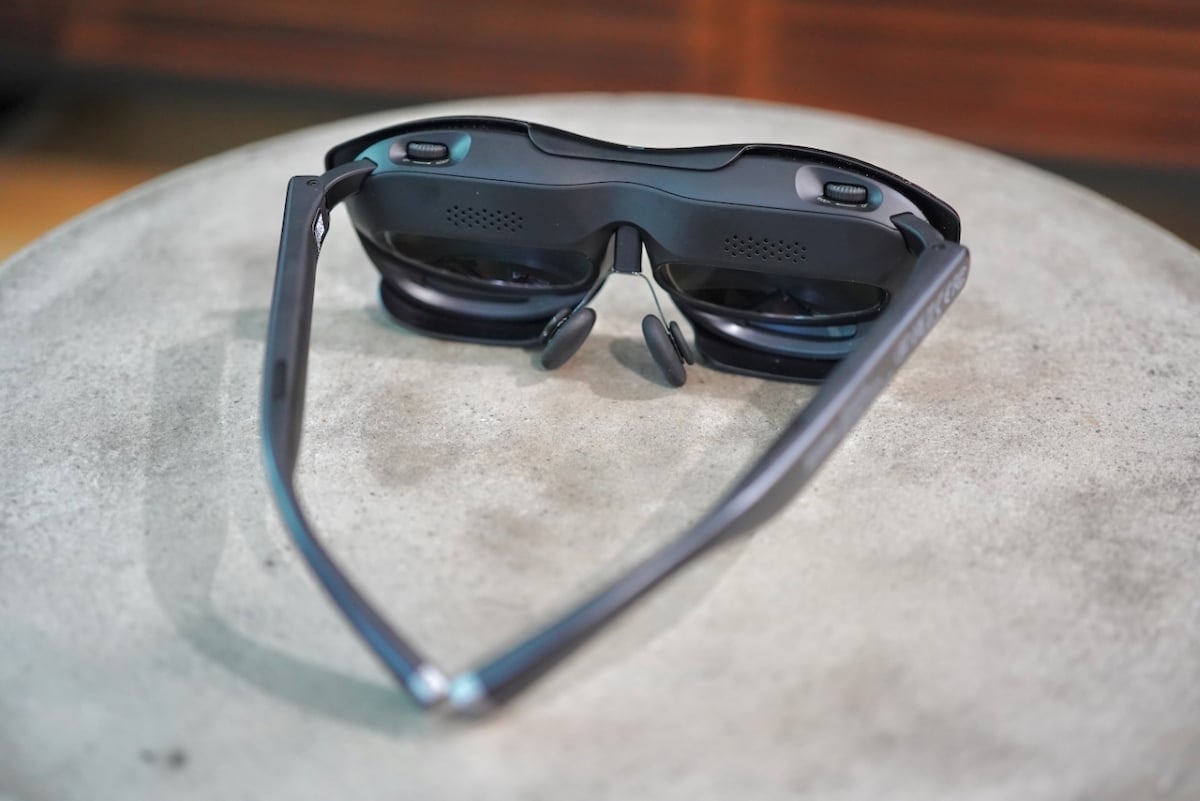
The biggest drawback is the lack of screen pinning or head tracking. The display stays locked to the center of your view and moves with every small shift of your head. It’s fine for watching video, but it becomes tiring if you’re trying to read or do precision work. You become aware of every subtle head movement, and there’s no Rokid equivalent to XReal’s Beam or desktop app to keep the screen anchored in place.
Rokid does offer the Station 2, which seems to add some spatial pinning, but only for apps running directly on the Station itself. It won’t stabilize external inputs like a phone, laptop, or game console, so most use cases still involve a floating screen that moves with your head.
Since the screen is always centered and fills most of your field of view, the AR passthrough doesn’t offer much functional value. I usually end up using the blackout shades for a more immersive and focused experience.
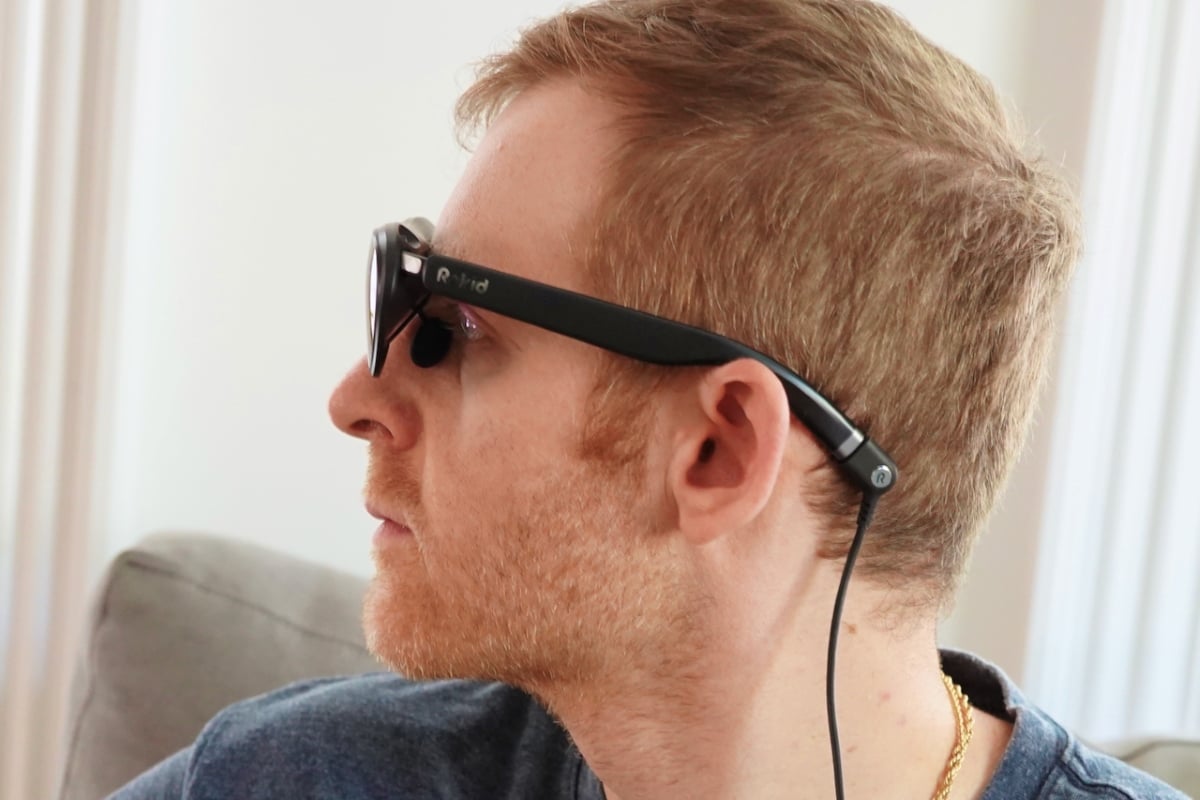
In terms of fit, the glasses sit slightly farther from the face than the XReal Air 2, which lets in more ambient light from the top, bottom, and sides. That can be helpful if you need to glance at a keyboard or stay aware of your surroundings, but it definitely reduces immersion.
The glasses warm up after a few minutes of use, though never to an uncomfortable degree. The built-in speakers are better than expected and work well as an alternative to headphones in quieter settings.
Final Thoughts
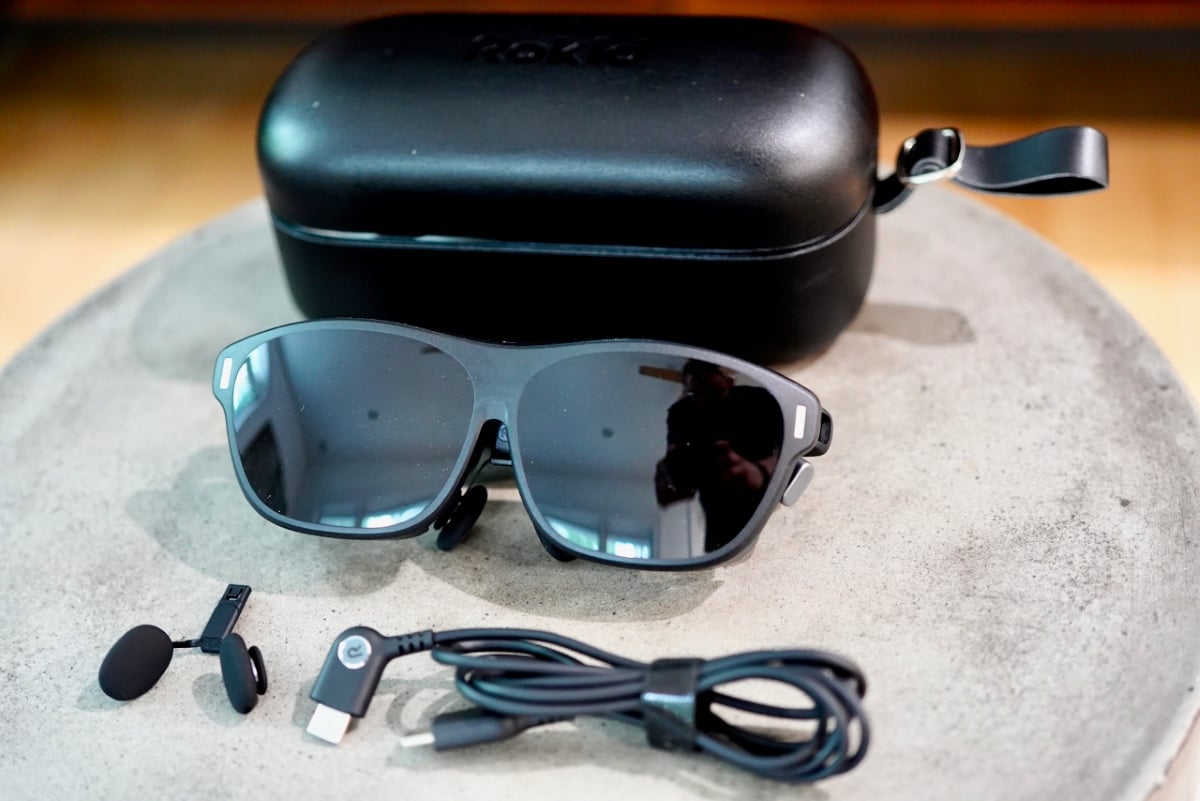
The Rokid Max 2 is an impressive wearable. Its main competition right now is XReal, which offers a similar display experience but includes head tracking and screen stabilization with their Beam accessory or a desktop application.
One of Rokid’s biggest advantages is built-in vision correction without needing an insert or extra accessory. You can adjust each lens to match your prescription, which makes a big difference if you’re nearsighted and not wearing contacts.
The display is a standout feature. It’s large, bright, and sharp, with strong contrast and a smooth 120Hz refresh rate. Whether you’re watching movies, gaming, or just browsing, everything looks clean and vivid.
The main limitation is the lack of screen pinning. The display moves with your head, which becomes straining during reading or detailed tasks. Rokid does sell the Station 2 for $299, or as part of a $648 bundle, but it seems to only supports screen pinning for apps running directly on the Station.
At $429 on Rokid’s site (or $529 on Amazon with possible $100 discounts), the Rokid Max 2 is priced fairly for what it offers. If your focus is on immersive viewing or working more privately in public spaces, it’s a compelling option—as long as you’re comfortable with its limitations.

